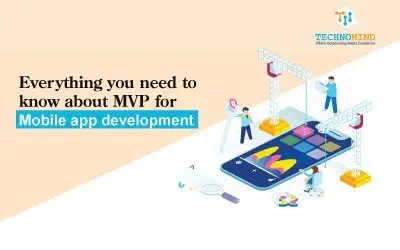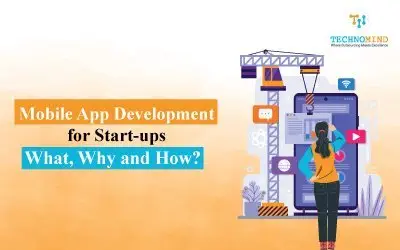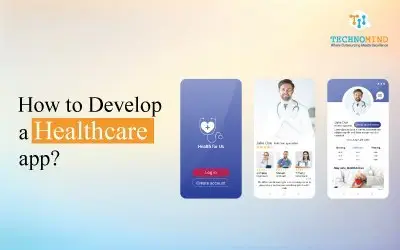Blog
How Does a Cloud Kitchen App can Amplify Your Food Start-up?
The two most important influencing variables for the expansion of online businesses are digitalization and the pandemic. A cloud kitchen business sounds like the greatest option if you want to grow your restaurant or launch a new enterprise in the food sector with less capital and stock. The idea is to produce meals in a professional kitchen and send it to customers via delivery applications. Another aspect of the cloud kitchen is takeaways.
Models for “cloud kitchens,” commonly referred to as “ghost kitchens” or “dark kitchens,” lack a notion of in-home dining. There are various ways to distribute meals to individuals right now. However, it is preferable for your cloud kitchen software to have exclusive control over the ordering process and the mode of delivery. Additionally, it will boost the confidence and dependability of your target market.
However, it takes a lot of work to develop an app for cloud kitchen startups since you have to take into account the budget, project size, features like UI and responsiveness, payment options, and many other things. We’ve discussed the ideal technique to develop the cloud kitchen app and a number of other connected topics while keeping in mind the issues.
What is a Cloud Kitchen Startup?
A cloud kitchen, often referred to as a ghost kitchen, dark kitchen, or virtual restaurant, is a restaurant kitchen that solely accepts online orders through websites and mobile apps and delivers food dishes in accordance with those orders to customers’ doorsteps. The cloud kitchen company does not have a dining area or facilities.
The size of the global ghost kitchen market exceeded US$55 billion in 2021 and is anticipated to reach US$100 billion by 2027. Global network of ghost kitchen restaurants Mr. Beast Burger established itself as a top creator-owned brand in 2022, bringing in an estimated $100 million annually. It has been projected that India, where the gross merchandise value is expected to surpass 2 billion USD by 2025, is home to the fastest-growing cloud kitchen startup.
Benefits of Cloud Kitchen Business
The best thing about a dark kitchen business is that it can be run as a stand-alone enterprise or as an addition to an existing physical restaurant. Despite this, numerous well-known restaurants are planning or have already created their cloud kitchen business. The following are some advantages of cloud kitchen startups:
- Lower overhead costs: Without the need for a physical storefront, cloud kitchens have lower rent, utilities, and labor costs, making it easier to operate with lower margins.
- Flexibility:Cloud kitchens can quickly pivot and adapt to changing market conditions and trends, allowing them to offer new menu items or adjust their offerings without significant investment in new equipment or infrastructure.
- Increased efficiency: With fewer distractions and focus on food preparation and delivery, cloud kitchens can streamline their operations to maximize efficiency, reduce wait times, and improve customer satisfaction.
- Expanded reach: Cloud kitchens can reach a wider audience by partnering with food delivery platforms and marketing themselves through social media and other digital channels, increasing their potential customer base.
- Data-driven decision-making:Cloud kitchens can leverage data and analytics to optimize their operations, menu offerings, and marketing strategies, resulting in better decision-making and more successful outcomes.
How Can an App Streamline Cloud Kitchen Start-up?
An app can be an essential tool for streamlining a cloud kitchen start-up. Here are some ways in which an app can be used to streamline cloud kitchen operations:
- Online ordering: An app can be used to allow customers to place orders online, which can improve the ordering process and reduce the workload on staff. Customers can easily browse the menu, place their orders, and make payments through the app, which can streamline the ordering process and reduce the potential for errors.
- Delivery management: An app can be used to manage the delivery process by tracking orders, dispatching drivers, and providing real-time updates to customers. This can help to improve the delivery experience and increase customer satisfaction.
- Menu management:An app can be used to manage the menu, allowing kitchen staff to make updates and changes in real time. This can help to keep the menu up-to-date and ensure that customers have access to the latest offerings.
- Inventory management:An app can be used to track inventory levels and automatically reorder supplies when inventory levels get low. This can help to reduce waste and ensure that the kitchen always has the supplies it needs to operate efficiently.
- Analytics: An app can provide analytics and data on customer ordering habits, sales, and other key metrics. This can help cloud kitchen operators to make data-driven decisions about menu offerings, marketing, and other key aspects of the business.
How to Develop a Cloud Kitchen App?
Developing a cloud kitchen app requires a multi-step process. Here are the key steps involved in developing a cloud kitchen app:
- Define your app requirements:The first step is to define your app requirements. This includes identifying the features you want to include in your app, such as online ordering, menu management, delivery management, and analytics.
- Choose a development approach: You can choose to develop your app in-house or outsource the development work to a third-party development firm. If you choose to develop the app in-house, you will need to hire a team of developers, designers, and other professionals with experience in app development.
- Design your app:Once you have identified your app requirements and chosen a development approach, the next step is to design your app. This includes creating wireframes, mockups, and user interface designs for your app.
- Develop your app: With your app design in place, the next step is to start developing your app. This involves writing code, integrating third-party tools and services, and testing your app to ensure that it works as expected.
- Launch your app: Once your app is developed, the next step is to launch it. This involves submitting your app to the app stores (such as the Apple App Store or Google Play Store) and promoting it through various channels such as social media, paid advertising, and influencer marketing.
- Maintain and update your app: After launching your app, it’s important to maintain and update it regularly. This includes fixing bugs, adding new features, and keeping your app up-to-date with the latest operating system requirements.
Developing a cloud kitchen app can be a complex process, but by following these key steps, you can create a powerful tool that can help streamline your cloud kitchen operations and improve the customer experience.
Why Should You Hire a Third-Party App Developer for Your Cloud Kitchen Business?
Hiring a third-party app developer for your cloud kitchen business can have several benefits, including:
- Expertise: Third-party app developers have the expertise and experience to create high-quality, functional apps that meet your business needs. They have experience working with a wide range of technologies, programming languages, and development tools, allowing them to create custom solutions tailored to your specific requirements.
- Time-saving:Developing an app in-house can be time-consuming and requires significant resources. By outsourcing app development to a third-party developer, you can free up your time and resources to focus on other aspects of your business, such as menu planning, marketing, and operations.
- Cost-effective: Hiring a third-party app developer can be cost-effective, especially if you don’t have the expertise or resources to develop the app in-house. Third-party developers can work with you to develop an app that meets your budget requirements, without sacrificing quality or functionality.
- Faster time-to-market: Third-party app developers can help you launch your app faster, allowing you to start generating revenue sooner. They have the expertise and resources to develop and launch your app quickly, without sacrificing quality or functionality.
- Ongoing support: Once your app is launched, third-party developers can provide ongoing support, including bug fixes, feature updates, and security patches. This can help ensure that your app stays up-to-date and continues to meet your business needs over time.
Hiring a third-party app developer for your cloud kitchen business can help you create a high-quality, functional app that meets your business needs, while also saving time, money, and resources.
Looking to Grow Your Wedding Planning Start-up? – Try Technomind Software
Starting a cloud kitchen firm is a fantastic chance for food entrepreneurs who want to break into the food market among all the app concepts. A cloud kitchen must be carefully planned, equipped, and have a suitable location from which to operate. However, the advantages of running a cloud kitchen, such as decreased operational expenses and the capacity to reach a larger audience, make it an investment that is beneficial.
The flexibility that a cloud kitchen offers is one of its main advantages. In particular, taking into account various distribution choices and selecting those that best suit the target market and company strategy.
Overall, with the appropriate strategy, a cloud kitchen business can be a successful endeavor. Food entrepreneurs can launch a successful and sustainable food business by comprehending the significance of cloud kitchens, properly organizing the setup, and investigating the many delivery alternatives accessible.
Everything you need to know about MVP for Mobile app development
Every business nowadays want to expand their reach in digital world and doing that in a better way, one of the good option is to…
Mobile App Development for Start-ups – What, Why and How?
Mobile applications are becoming more and more essential to the expansion and success of organizations, especially startups. Since…
How to Develop a Healthcare app?
Can you imagine a world where healthcare services are just a tap away on your smartphone? As technology continues to revolutionize various…





0 Comments